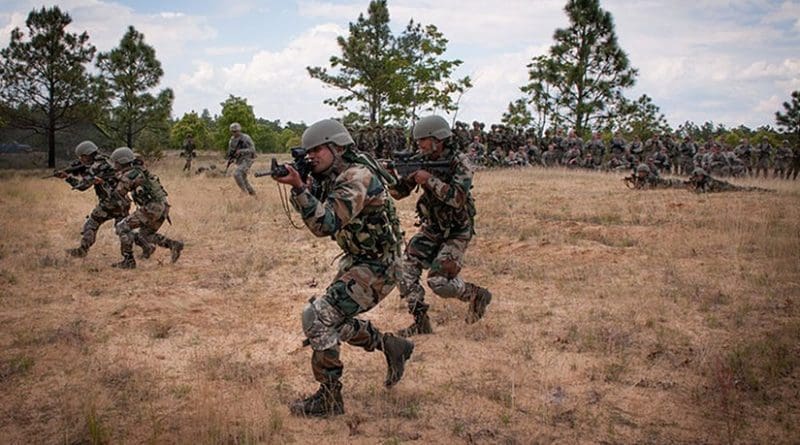India: Call For Reshuffling Of Force Deployment – Analysis
The pattern of India’s internal security challenges has undergone a significant makeover in recent years. Chronic conflicts have either subsided or have hit a low patch and new conflict areas have emerged, necessitating a rationalisation in the way the Government deploys its security forces. But it would appear that our security policy-makers are stuck in time, steadfastly refusing to respond to the unfolding conflict dynamics. This explains, in a way, why the country, with a bourgeoning security force establishment, still struggles to find adequate forces to fight its internal wars.
There is a clear shift of violence from the age-old conflict theatres in Kashmir and the north-east, to the states affected by Left-wing extremism. Deployment of Central armed police forces or CAPFs (previously called Central para-military forces) has gone up from 37 to 81 battalions in the Maoist theatres. It is a substantial increase, yet remains insufficient. It is unlikely that even with a war time raising of CAPF battalions, the Centre will be able to meet the unending demands from the states. This calls for a fresh approach on the deployment of forces.
Not many would agree that the current Indo-Pakistan peace talks would ever reach a situation as to allow New Delhi to pull out some of its troops from Kashmir. Hypothetically speaking, such an eventuality would come as a boon for the force-starved Maoist theatres. Kashmir today engages close to 80 battalions of Central police forces and 65 battalions of Rashtriya Rifles (RR) of the Indian Army. 50 per cent of the RR is sourced from the army’s infantry wing and the rest from other units, making it almost an ideal force against the Maoists.
Opposition from the Indian Army and the counter-terrorism experts notwithstanding, army’s role in dealing with Left-wing extremism has grown over the years. According to a recent white paper prepared by the Indian Army, 65,000 of its personnel would be required if it is to be involved against the Maoists. It is even willing to consider the relocation of the RR battalions for the purpose. This, however, is conditioned by sufficient progress in the Indo-Pak peace process and a total halt to the cross-border infiltration and militancy. Not many would see this happening in the near future, even when the Pakistan state is undergoing a life-threatening crisis.
From where a realistic relocation of forces is possible, is the north-east. Although this restive region of the country has not exactly become a peace den, over the past years insurgency movements have constantly lost their wherewithal, popular appeal and hence, have struggled to survive. Cooperation from Bangladesh has forced the once powerful
Assam-based Ulfa to start a process of dialogue with the government. Even in Manipur, where insurgency movements appeared almost intractable a few years back, over a dozen outfits are under Suspension of Operations agreement with the government. The most lethal UNLF has suffered a serious blow in the form of the arrest of its top leader R K Meghen. Since 2008, the entire north-eastern region has seen a gradual but consistent improvement in the security situation, demonstrated in the declining capacity of the militant formations. Compared to over 1,000 fatalities recorded in 2008, insurgency related deaths fell to 322 in 2010 and further to 177 in the first eight months of 2011.
If rising violence was the raison d’etre for induction of Central forces into the north-east, it is necessary that the drop in violence allows their return from the area. It not only helps remove the tag of ‘militarisation of the north-east’, allowing the state police forces to take a lead role in dealing with the remnants of insurgency, but also makes those withdrawn forces, at least the CAPFs, available for the Maoist-affected areas. There is no reason why a state like Manipur should continue to consume over 45 to 50 battalions of the army and the CAPFs, when it records barely 10 deaths per month for the past two years. Civilian life in Manipur continues to be affected by recurrent political blockades, but these are not exactly the problems that Central forces should be dealing with. Home Minister P Chidambaram’s recent justification that a large presence of security forces in the north-eastern states is “a necessity to deal with the threat of violence and the cases of extortion” isn’t a really a valid rationale.
The reality of conflict transformation needs to figure prominently in MHA’s policies as far as force deployment is concerned and stubbornness not to accept it is not going to help.
This article appeared at Express Buzz and is reprinted with permission

